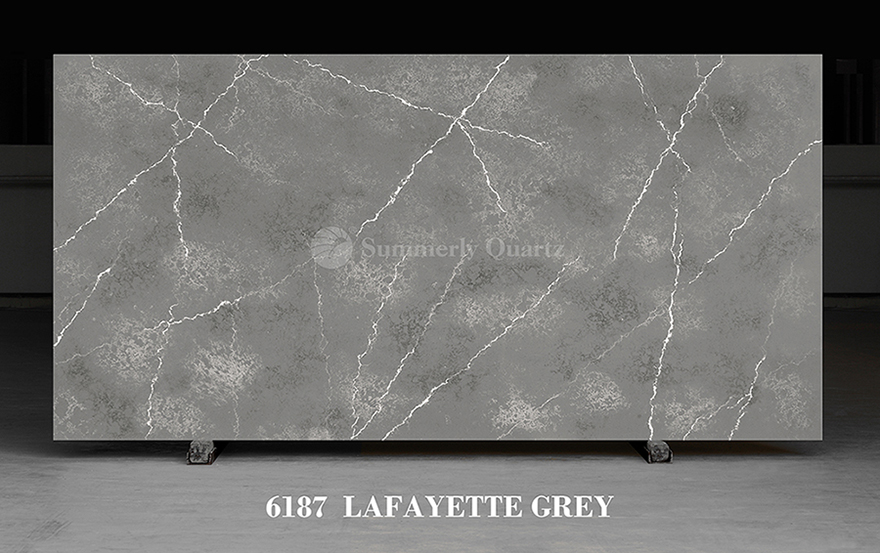
Quartz stone, both natural and artificial, is a popular material utilized in a variety of applications due to its durability, versatility, and aesthetic appeal. Understanding the differences between natural and artificial quartz, including how they are formed, can provide valuable insight into their unique properties and characteristics.
Natural quartz stone, also known as pure or genuine quartz, is formed through geological processes in the Earth's crust. It is primarily composed of silicon dioxide (SiO2) and may contain trace elements that impart various colors and patterns.
Natural quartz forms through the crystallization of silicon dioxide from silica-rich solutions or melts in geological environments such as igneous, metamorphic, or sedimentary settings. Quartz crystals may grow individually or in clusters, developing over millions of years under specific temperature, pressure, and chemical conditions.
In igneous environments, quartz crystals can crystallize from magma as they cool and solidify underground, forming veins or pockets within rocks like granite or pegmatite. Metamorphic processes can also lead to the formation of quartz veins within rocks such as schist or gneiss, as existing minerals recrystallize under elevated temperature and pressure conditions. Sedimentary environments contribute to the formation of quartz through the weathering and erosion of pre-existing rocks, with quartz grains accumulating and cementing together over time to form rocks like sandstone or quartzite.
Natural quartz stone exhibits a wide range of colors, from clear and transparent to opaque and colored varieties like rose quartz, amethyst, and smoky quartz.
Its appearance may include unique patterns and textures resulting from the presence of impurities and mineral inclusions during the formation process.
Artificial quartz stone, also known as engineered quartz or quartz composite, is manufactured synthetically using a combination of crushed quartz crystals, polymer resins, and pigments.
It is engineered to mimic the appearance and properties of natural quartz while offering enhanced durability and consistency in color and pattern.
Artificial quartz is produced through processes such as hydrothermal synthesis or the compression of quartz sands and resins under high pressure and temperature conditions. Crushed quartz crystals are combined with polymer resins and pigments to create a slurry, which is then poured into molds and cured to form solid slabs.
Engineered quartz offers uniformity in color and pattern, as well as greater resistance to staining, scratching, and etching compared to natural quartz.
It can be customized to achieve specific colors, patterns, and finishes, making it a versatile choice for various design applications.
Natural quartz stone showcases the inherent beauty of geological formations, with variations in color, pattern, and veining from slab to slab. This uniqueness adds a touch of natural charm and character to each installation.
Artificial quartz stone offers consistency in color, pattern, and veining, as it is manufactured to replicate specific aesthetic qualities.
Natural quartz stone is known for its durability and resistance to heat, scratches, and staining. However, its performance may vary depending on the specific type and quality of the quartz.
Artificial quartz stone is engineered to be highly durable and resilient, often surpassing the performance of natural quartz.
Natural quartz stone requires regular sealing to protect against staining and etching, as well as routine cleaning with mild soap and water to maintain its appearance.
Artificial quartz stone is non-porous and requires minimal maintenance, typically only needing to be cleaned with a damp cloth and mild detergent. It does not require sealing and is less susceptible to damage from spills or harsh cleaning agents.
Natural quartz stone may vary in cost depending on factors such as rarity, quality, and sourcing. High-end varieties like exotic quartzite can be more expensive than artificial quartz.
Artificial quartz stone is generally more affordable than natural quartz, offering a cost-effective alternative for budget-conscious projects. It is also readily available in a wide range of colors and patterns, making it accessible for various design preferences and aesthetic requirements.
Natural quartz stone offers limited customization options due to its inherent variability in color and pattern. However, it can be cut and shaped to fit specific design requirements.
Artificial quartz stone provides greater design flexibility and customization capabilities, allowing for the creation of custom colors, patterns, and finishes to suit individual preferences and project specifications.
Understanding the formation of natural and artificial quartz stones enhances appreciation for their distinct qualities and applications in construction, design, and industry. While natural quartz stone offers the charm of natural beauty and variability, artificial quartz stone provides consistency, durability, and customization options tailored to specific design needs.
Ultimately, the choice between natural and artificial quartz stone depends on the project requirements, aesthetic preferences, and considerations such as budget, maintenance, and sustainability goals.